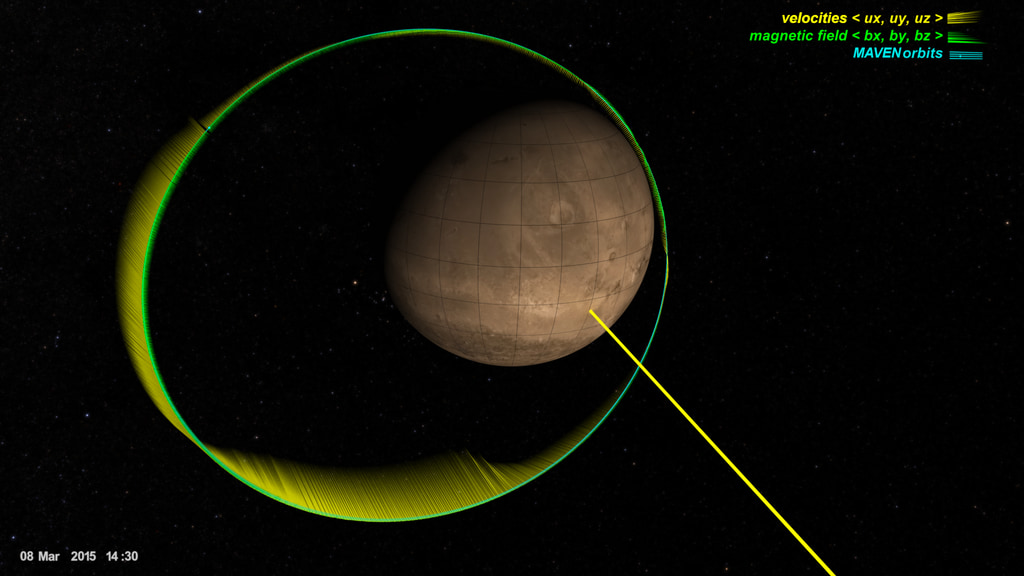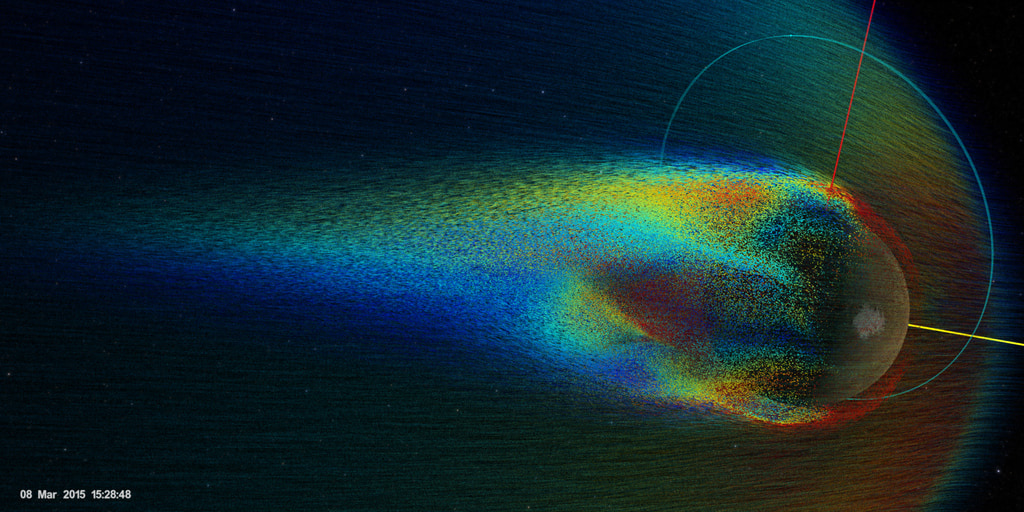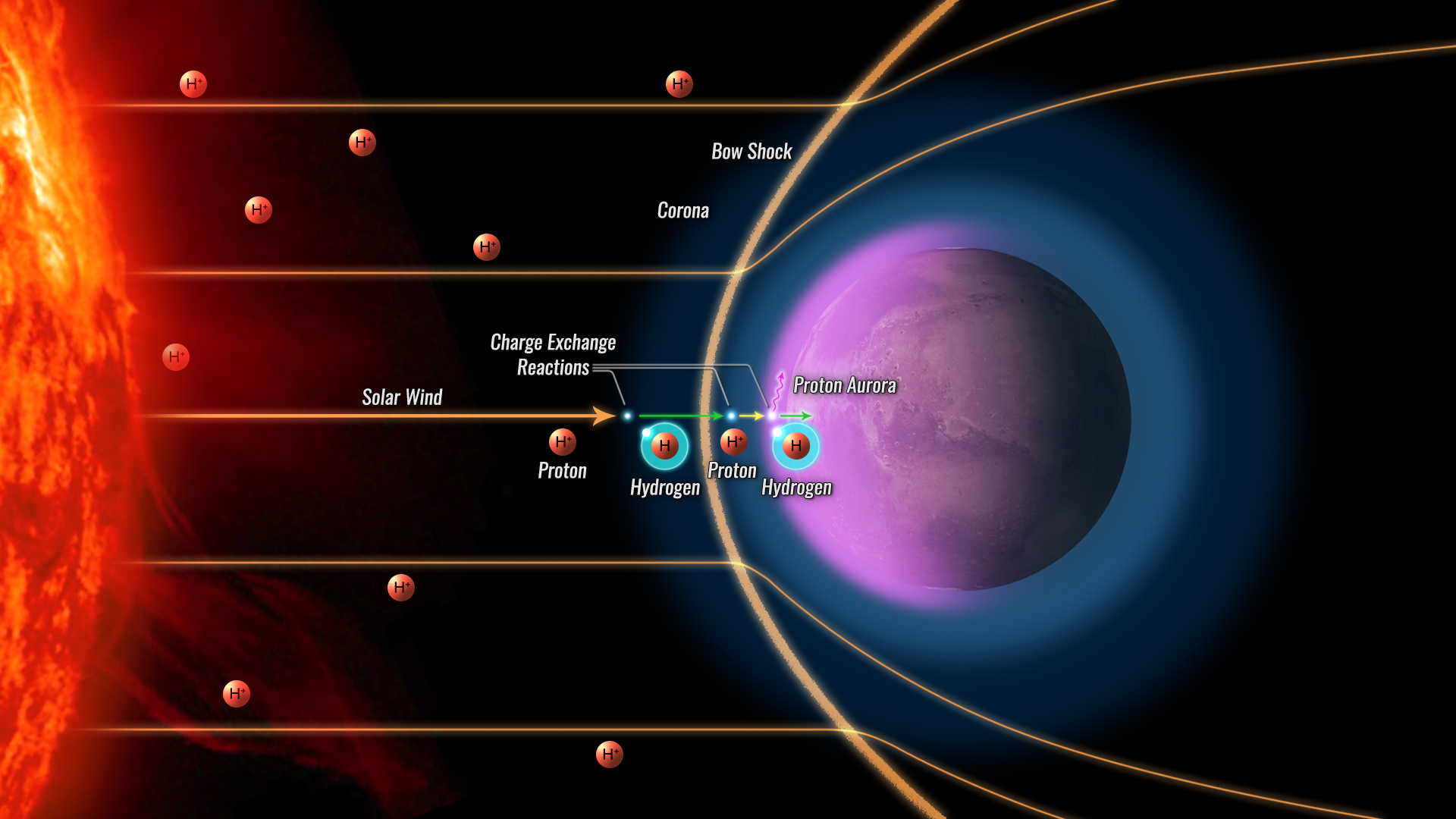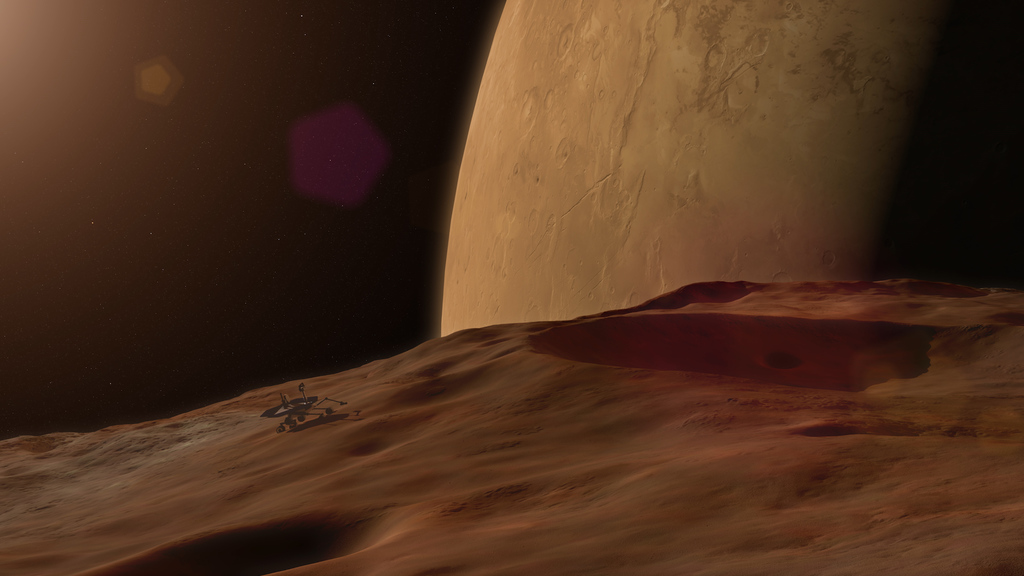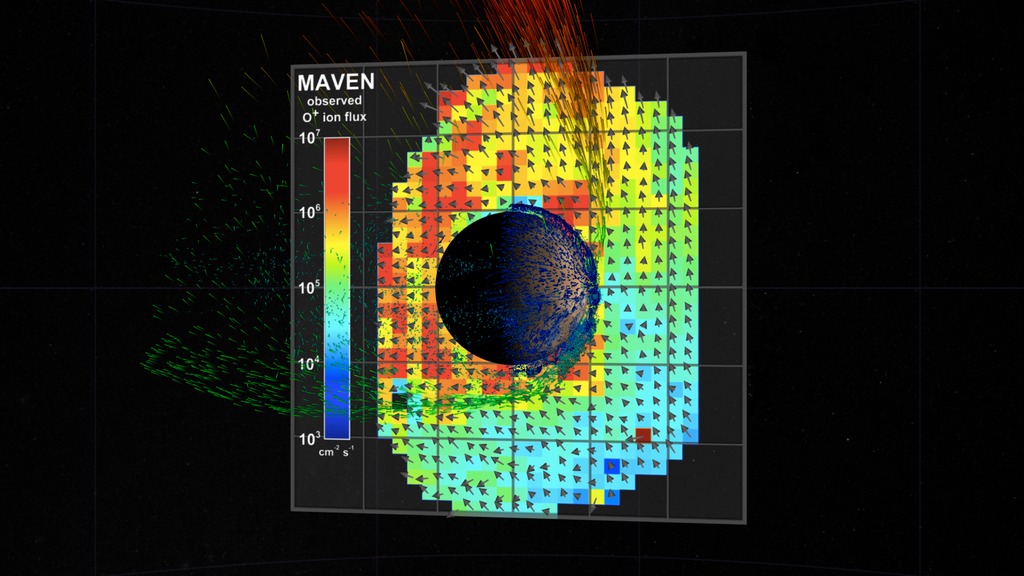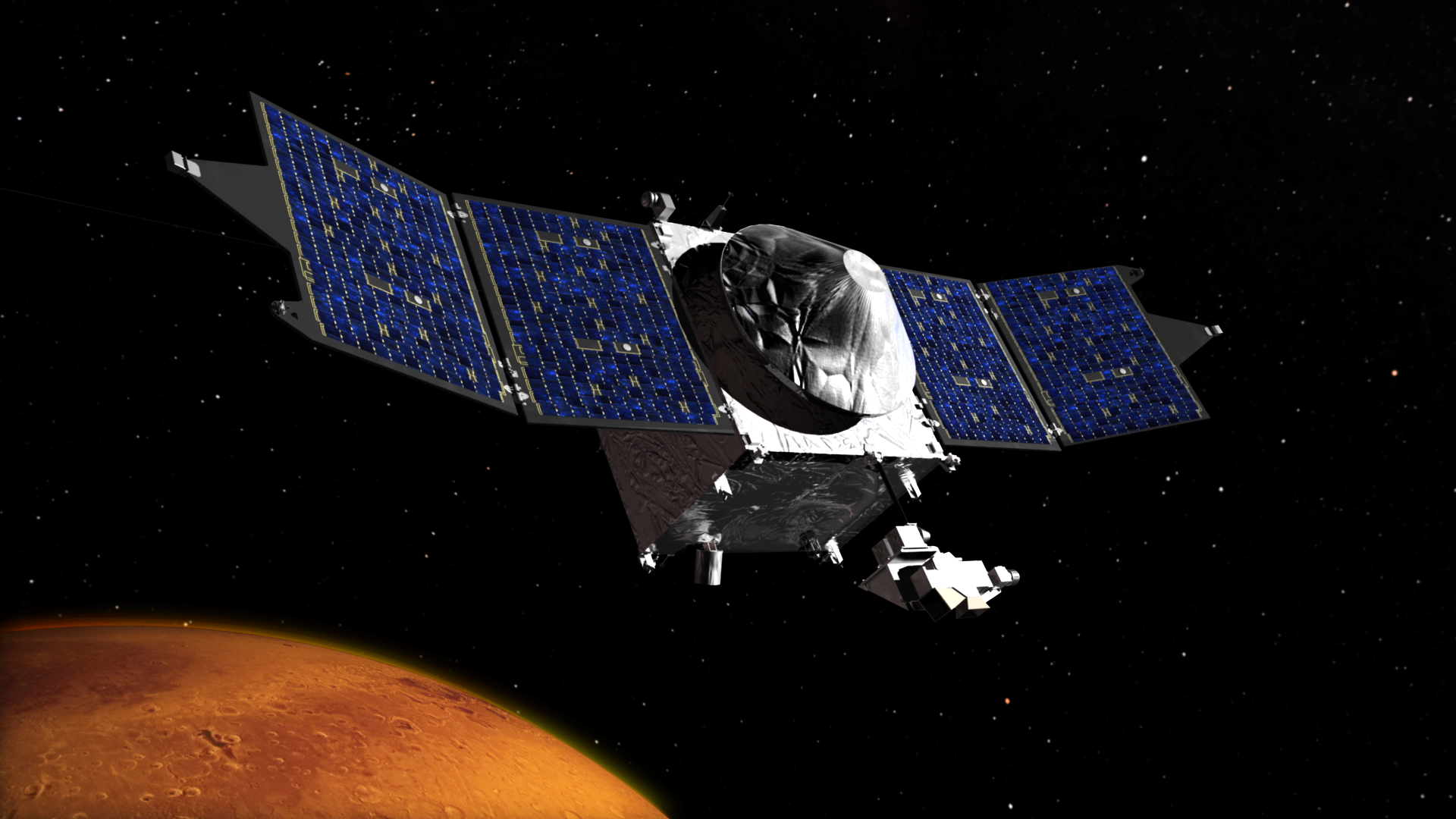Solar Wind and Mars Bow Shock
Simulation of the solar wind at Mars compared with MAVEN observations, showing the predicted bow shock. Available for download in up to 4k resolution.
Today, Mars is a global desert with an atmosphere far too thin to support bodies of flowing water, but evidence shows that Mars was considerably wetter in the ancient past. Scientists think that climate change on Mars was caused by the loss of an early, thick atmosphere, and NASA's MAVEN mission is investigating what could have driven its escape.
One of the prime suspects is the solar wind, a stream of electrically charged particles continuously blowing outward from the Sun. Unlike Earth, Mars lacks a global magnetic field to deflect the incoming solar wind. Instead, charged particles from the Sun slam into the Mars upper atmosphere, piling up in a bow shock ahead of the planet. The inner boundary of this bow shock reaches the Mars ionosphere, and can accelerate ions to escape velocities. During solar storms, the bow shock pushes even deeper into the atmosphere and is accompanied by increased rates of ion escape.
The visualization on this page compares a simulation of the solar wind at Mars with data from the MAVEN spacecraft. MAVEN's observations confirm the existence of a bow shock, with a density and shape matching the predicted pattern. Thanks to MAVEN, scientists can now observe the solar wind at Mars during both normal and extreme conditions, allowing them to study the Sun's ongoing role in the evolution of the Martian climate.
Read the full press release about this finding.
Watch an excerpt of the MAVEN Mission Briefing.

Print resolution still of MAVEN observed average solar wind flow (with Mars)

Print resolution still of MAVEN observed average solar wind flow (without Mars)
For More Information
See NASA.gov
Credits
Please give credit for this item to:
NASA's Scientific Visualization Studio and the MAVEN Science Team
-
Visualizers
- Greg Shirah (NASA/GSFC)
- Horace Mitchell (NASA/GSFC)
-
Producer
- Dan Gallagher (USRA)
-
Scientists
- Jasper Halekas (University of Iowa)
- Bruce Jakosky (LASP)
- Xiaohua Fang (LASP)
- Yaxue Dong (LASP)
- Yingjuan Ma (UCLA)
Release date
This page was originally published on Thursday, November 5, 2015.
This page was last updated on Thursday, April 4, 2024 at 12:07 AM EDT.
Missions
This visualization is related to the following missions:Series
This visualization can be found in the following series:Datasets used in this visualization
-
[MGS: MOC]
ID: 58 -
BATS-R-US Magnetosphere Model
ID: 686MHD Magnetospheric simulation
See all pages that use this dataset -
Average Solar Wind Flow [MAVEN]
ID: 899
Note: While we identify the data sets used in these visualizations, we do not store any further details, nor the data sets themselves on our site.
